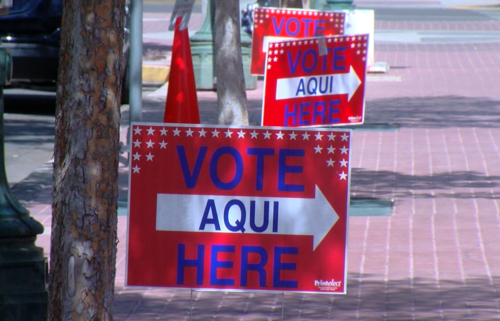Supreme Court examines Biden’s power to set US immigration policy in ‘Remain in Mexico’ challenge
By Ariane de Vogue and Priscilla Alvarez, CNN
The Biden administration will ask the Supreme Court on Tuesday to allow it to terminate a Trump-era border policy known as “Remain in Mexico,” a case that will be a test of the White House’s ability to set immigration policy.
Under the unprecedented program launched in 2019, the Department of Homeland Security sent certain non-Mexican citizens who entered the US back to Mexico — instead of detaining them or releasing them into the United States — while their immigration proceedings played out.
Critics call the policy inhumane and say it exposes asylum seekers with credible claims to dangerous and squalid conditions. Migrants subject to the program — formally known as Migrant Protection Protocols — have resided in makeshift camps along Mexico’s northern border.
Remain in Mexico is separate from the public health authority, known as Title 42, that allows border officials to turn back migrants encountered at the border, therefore barring them from seeking asylum, unlike “remain in Mexico,” which still provides migrants that chance. (Title 42 is the subject of separate legal challenges; a federal judge on Monday temporarily blocked ending that authority.)
Tuesday’s case and the political fallout over the Biden administration’s effort to end Title 42 next month have again put into sharp focus the politically precarious position for the White House and the uphill battles the White House faces in court.
While Biden himself vowed to end the “remain in Mexico” program upon taking office, he has been stymied by federal courts.
The case raises questions not only regarding immigration law, but also a president’s control over policy and his diplomatic relationships with neighboring countries.
Initially, Biden’s Department of Homeland Security issued a memorandum terminating the program last June. But after two states –Texas and Missouri — brought a challenge, a district judge vacated the memo and ordered the policy reinstated.
The court said the administration had not adequately explained its decision-making process in its attempt to end the program in violation of the federal Administrative Procedure Act. Going a step further, the court also interpreted immigration law to require the DHS to return certain noncitizens to Mexico when it lacks sufficient funds to detain them on US soil, despite long-standing discretion that allows authorities to decide who to release or detain.
The DHS tried again last fall, issuing a new memo offering a more comprehensive explanation of its decision to terminate the program, but an appeals court ultimately upheld the district court’s ruling and refused to even take under consideration the reasoning put forward in the new memo, suggesting that it had come too late.
“The lower courts in this case adopted unprecedented limitations on the ability of federal agencies to change policy and to issue new decisions in response to adverse court rulings,” Andrew J. Pincus, a lawyer at Mayer Brown LLP, said in an interview.
“If upheld by the court, they would dramatically restrict agency decision-making across the government,” he added.
As of April 17, more than 2,300 migrants have been sent back to Mexico under the “Remain in Mexico” policy since it was renewed late last year, according to the International Organization for Migration.
Solicitor General Elizabeth Prelogar told the justices in court papers that the lower courts had relied on “novel and erroneous interpretations” of federal law to compel DHS to maintain a program that the administration has “twice determined to be contrary to the interests of the United States.”
And she noted that not even the Trump administration had interpreted immigration law to read that the government must be able to detain most people coming to its borders.
“Under the court of appeals’ interpretation, every presidential administration — including the one that adopted MPP — has been in continuous and systematic violation” of immigration law, she wrote. “The Executive has long exercised discretion to choose how best to allocate limited resources by prioritizing which noncitizens to take into custody and remove, what procedures to use to pursue removal, and whom to detain during the removal process.”
Prelogar said the law offers the government alternative options for processing applicants, noting that some can be admitted “on parole” and others may be placed in an expedited removal process. She noted that in fiscal year 2021, the DHS processed more than 671,000 migrants under traditional immigration protocols, an average of more than 55,000 a month.
She also argued that the lower court opinion would carry “dramatic foreign-relations implications” because it compels the executive branch to send those from third countries into Mexico — the territory of a foreign sovereign.
Texas Attorney General Ken Paxton, joined by Missouri Attorney General Eric S. Schmitt, urged the Supreme Court to uphold the lower court opinions. He said the Trump administration had launched the program because “tens of thousands of aliens unlawfully enter the Nation’s southern border every month.”
The-CNN-Wire
™ & © 2022 Cable News Network, Inc., a WarnerMedia Company. All rights reserved.



